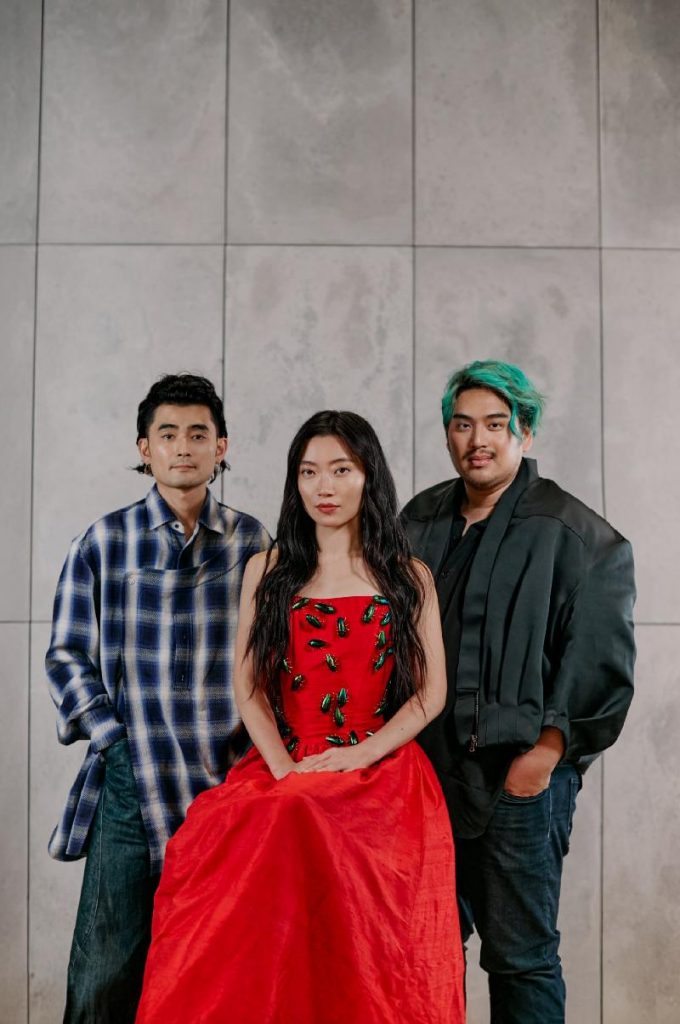
@Designers Kozaburo, Dauphinette and Bach Mai are selected as the three designers competing for the 2024 CFDA | Genesis House AAPI Design + Innovation Grant
In a world where fashion constantly strives for the “next big thing,” it’s refreshing when creativity is given the space to flourish alongside heritage and cultural storytelling. Enter the second annual CFDA | Genesis House AAPI Design + Innovation Grant, a competition that perfectly blends innovation with deep cultural roots, showcasing the power of Asian American and Pacific Islander (AAPI) designers who are shaking up the luxury fashion scene. The announcement of this year’s trio of talents—Bach Mai, Dauphinette, and Kozaburo—is a nod not just to fashion-forward thinking, but to the designers’ ability to weave their Asian heritage into a contemporary, global context.
But before we get swept away by the glamour of it all, let’s take a step back and ask: what does this competition really mean for the fashion industry—and why should we care?
The Contenders: Rising Stars with Global Visions
Bach Mai, Dauphinette, and Kozaburo may be rising stars, but they aren’t exactly new to the scene. In fact, their track records are filled with bold design choices and fearless experimentation. Take Bach Mai, for instance, a designer who has already graced the red carpet with his unapologetic celebration of glamour and femininity. His aesthetic is full of couture-level aspirations, making you wonder if we’ll soon be seeing his gowns at every A-list event.
Dauphinette, on the other hand, is an eco-conscious, upcycling visionary, with founder Olivia Cheng transforming the idea of sustainability into something that’s not just fashionable, but luxurious. In a fashion industry still grappling with its environmental impact, her innovative use of materials adds a refreshing spin to luxury.
And then there’s Kozaburo, the enigmatic Tokyo-born designer whose brand thrives on the tension between East and West, blending old-world craftsmanship with modern aesthetics. If you’re looking for a designer who uses clothing as a medium to explore identity, displacement, and the journey of self, Kozaburo is your man.
The Stakes: More Than Just a $100,000 Prize
Sure, the winning designer will eventually pocket an impressive $100,000, but this grant is about more than the money. It’s about mentorship, visibility, and the opportunity to craft a fashion line that tells a story—not just of fabric and stitching, but of cultural heritage, global identity, and personal narrative. With a $40,000 upfront grant and access to an advisory board of fashion juggernauts like Eva Chen from Meta and Wen Zhou, co-founder of 3.1 Phillip Lim, the designers are set up for a transformative experience. And let’s not forget the immersive trip to Seoul, where inspiration will no doubt collide with creative potential in the most dazzling way possible.
But here’s where we need to inject a bit of critical perspective. What happens after the runway lights dim and the grant money is spent? Fashion can be fickle, especially when it comes to embracing diversity beyond the buzzwords. While the grant is a huge leap forward for AAPI representation, the industry must ensure that these designers are supported long-term, rather than relegated to a fleeting moment of cultural tokenism.
Heritage Meets High Fashion: Why the AAPI Focus Matters
The focus on AAPI designers feels especially timely, given the complex conversations around race, identity, and belonging that have surfaced across industries over the past few years. But what makes this grant unique is its focus on Asian heritage as a source of innovation, not just tradition. These designers aren’t simply drawing from their cultural backgrounds for aesthetic purposes—they’re reimagining them, modernizing them, and integrating them into the luxury fashion vernacular.
Rachel Espersen, executive director of brand experience at Genesis House, captured this sentiment perfectly: “Bach Mai, Dauphinette, and Kozaburo are pushing the boundaries of fashion with their innovative designs.” But beyond the innovation, these designers are navigating the tricky waters of cultural representation, asking what it means to bring a global, Asian identity into a space that has historically been Eurocentric. Their work embodies a dialogue between past and present, between old-world craftsmanship and new-world vision.
The Commercial Critique: Is Luxury Fashion Ready for True Innovation?
It’s easy to get swept up in the grandeur of a five-month challenge, a trip to Seoul, and the mentorship of fashion elites. But will this innovation actually permeate the luxury fashion industry in a lasting way? The truth is, luxury fashion loves a good heritage narrative—but only when it’s wrapped in a neat, marketable package. The challenge for Bach Mai, Dauphinette, and Kozaburo isn’t just to create something beautiful; it’s to ensure their vision sticks in a world where trends come and go faster than you can say “capsule collection.”
The very fact that this grant exists speaks to a shift in fashion’s desire to diversify its voices, but it also underscores a crucial question: will these designers remain relevant after the buzz dies down? The industry loves to champion fresh talent, but sustaining that success requires not just innovation, but a commercial strategy that often clashes with the experimental nature of truly avant-garde design.
The Future is Bold, but Is Fashion Ready?
As we watch Bach Mai, Dauphinette, and Kozaburo navigate the upcoming months, one thing is clear: these designers have the potential to redefine what it means to be a luxury brand in today’s globalized, culturally complex world. But will the industry allow them to truly flourish? Or will they be molded into yet another trend, showcased for a season before being shelved for the next?

